We look at 10 of the most popular online business models, laying out the basic steps to get started, along with some pros and cons. Discover which one is right for you.
Key takeaways
- Digital products and SaaS models offer lower startup costs and recurring revenue potential compared to physical product businesses.
- Success in online business requires matching your skills and budget to the right model, then committing to consistent daily effort.
- Content creation, ecommerce, and eLearning represent accessible entry points with multiple revenue streams and scalability.
You want to build a successful online business...so, where do you start? The first thing is to determine the right business type to maximize your long-term income.
The next step is seeing how other entrepreneurs have already built the kind of business you dream about—so you can follow their path and avoid their mistakes.
In this guide, we’ll break down 10 of the most popular business models, showing you the key steps to get started, plus the pros and cons of each. To bring it to life, we’ll also share real stories of entrepreneurs who turned these models into profitable businesses.
And when you’re ready, you’ll see why Whop is the easiest place to launch—or scale—any type of business you choose.
Choosing the right online business model
To succeed as an online entrepreneur, you need to find a space where you can add value.
Whether you want to create content or resell collectibles, finding the right business model is the first step to realizing your dreams of financial freedom.
How do you choose the right business model?
It often comes down to your interests, skills, experience, or spotting a gap in the market. Budget also matters—some models require more upfront investment than others.
Just as important is consistency. Building a business takes daily effort and the willingness to keep going when things get tough. As Steven Schwartz, Co-founder & CEO of Whop, puts it:
“The biggest learning is you have to just start a business if you want to. You can’t be successful in business if you’re not starting one. Just doing it is huge—and instead of worrying, ‘what if this doesn’t work?’ ask yourself, ‘what if it does?’”
Below, we’ll walk through 10 of the most popular business models to help spark your next move. Let’s dive in.
Most popular online business models
1. Software-as-a-Service (SaaS)

We start with a business model that can lead to multi-billion-dollar income.
SaaS is a business model that involves developing software to serve a specific purpose and sell access to end-users (B2C) or to other firms (B2B).
Nowadays, SaaS usually means cloud-based software downloaded from the internet, instead of locally installed software.
Cloud software is generally bought through a subscription model (that means – kerching! – recurring revenue).
Everyday examples include things like Microsoft 365 and Adobe’s Creative Cloud. People pay monthly or annually (usually at a discount) to download and use the software on their devices.
However, within SaaS, there are other payment models. These include:
- Freemium: This is where a version of the software is available for free, with a premium paid-for option offering additional features.
- Open Source: Rather than getting people to pay for your software, you put it into the public domain and find other routes to monetization.
- White Label: A more sophisticated model for SaaS, this involves selling your software to other firms, which brand it with their logo.
One of the benefits of SaaS is the huge diversity…
SaaS covers customer relationship management and marketing – such as HubSpot, Mailchimp and Salesforce. SaaS also includes ecommerce and leisure – like Shopify, Netflix and Expedia.
On the flip side, the costs of getting your SaaS business up and running can be high – but the profits can be stratospheric.
Pros and cons of SaaS
| Pros | Cons |
|---|---|
| ✅ Potential for high profits | ❌ Challenges of software development |
| ✅ Low barriers to entry | ❌ High start-up costs |
| ✅ Ability to scale the business globally and to add other services | ❌ Need to stay on top of data privacy and security issues |
| ✅ Opportunity for recurring revenue from a SaaS subscription model |
How to get started with SaaS
To build a successful SaaS business, you need to find a niche or opening in the market. Alternatively, you need to find a way of doing something better than anyone else.
Once you have identified an opportunity, the process begins of developing a software-based solution.
This means finding the right team to build and test your software, firstly as what’s called a minimum viable product. If this proves successful, you can work towards launching your software to the market.
If you don’t have the expertise, the costs of outsourcing software development can be high but, again, the rewards can be huge.
Ready to get started? Here are 30 SaaS business models that you can explore today.
SaaS making money: John Sung Kim
If you want to learn how huge those SaaS profits can be, look no further than John Sung Kim, co-founder of virtual call center tech firm Five9.

With no software development experience, Sung Kim and his partner took Five9 from nothing to a $350m IPO on the NASDAQ exchange. They later received an offer from software giant Zoom to buy the company for a cool $14.7bn.
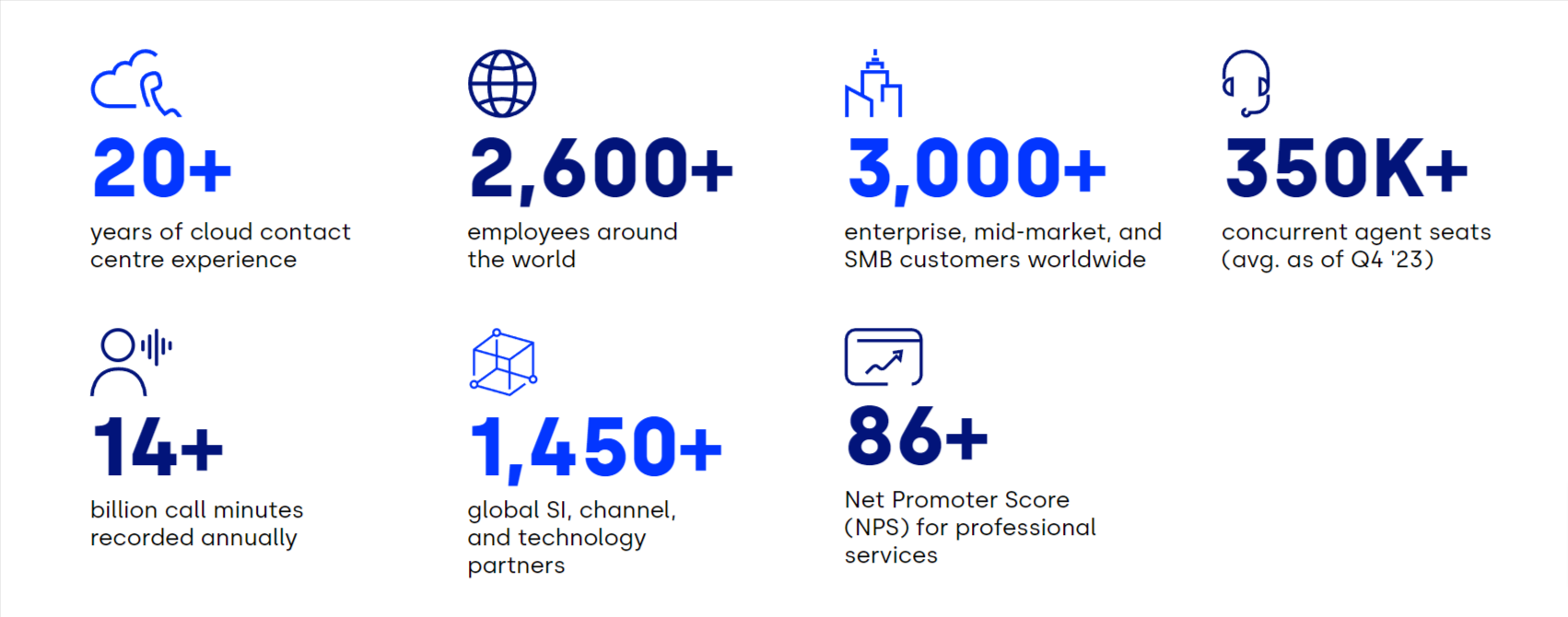
“In the past, you had to find somewhere to sell a product, set up a payment platform, network and build up a community of potential customers before you could even think about launching your own business, Now, all you need is a phone and an internet connection.” Cameron Zoub, co-founder and chief growth officer at Whop.
2. Content creation

One of the most popular models for people looking to start an online business involves content creation. Entrepreneurs in this space post content for their audience across various online platforms.
What is a content creator, and how do they make money?
Content creators make money in lots of ways, including influencer marketing and monetization (such as subscriptions). There’s also affiliate marketing, which we get into a little later.
Successful content creators partner with brands and get paid to promote their products and services. Do this well and you can rise to become an influencer in your niche.
The types of content you create include:
- Social media posts
- Blogs (including guest blogging)
- Videos
- Images
- Graphics
- Podcasts
- Newsletters
The key is to build a strong brand with defined appeal.
But is content creation still a thing in 2024? Well, with the influencer marketing industry due to reach $24bn this year and the content creation market hitting $32.3bn, we’d say, a big-time “yes”.

Pros and cons of content creation
| Pros | Cons |
|---|---|
| ✅ Easy to start | ❌ Competitive space |
| ✅ Creative and fun | ❌ Need to build a large audience |
| ✅ Can work across multiple niches | ❌ Time-intensive |
| ✅ Low start-up costs | |
| ✅ Great opportunities to scale | |
| ✅ Multiple revenue streams |
How to get started in content creation
To get started as a content creator, you simply – create content! Post regularly on social media platforms and engage with others in your niche.
The most important thing is to choose your niche wisely and build a strong personal brand. It’s also crucial to plan your content schedule and to craft professional-looking content.
If you don’t have writing or design skills, think about how you will approach these types of tasks. Fortunately, there are lots of platforms out there to help with things like scheduling and editorial stuff.
Overall, success as a content creator means treating it as a business and looking at ways to leverage what you create to generate views, clicks and revenue.
Content creators making money: Charlotte Palermino
Dieux co-founder Charlotte Palermino has built up a large following in the beauty world across social media, including Instagram, TikTok, and X (formerly Twitter), and a Substack newsletter.

Through her channels, Palermino – known as the “skincare fairy godmother” – creates content in her niche, promoting products to her audience.

She also has a presence on Shop My, where people can buy the products she recommends (slicing off a nice commission for herself) and writes articles for beauty publications.
It’s all about staying current with the latest products and trends, and engaging with her audience who trust her word on all things skincare.
Want to make money as a content creator? We show you how.
3. Ecommerce
Selling products online is another great business model that’s a cinch to start. You can choose to sell physical products or digital products online.
Digital products you can sell include:
- Ebooks
- Art & design
- Music & sound
- Podcasts
- Memberships
- Sports betting picks
If you’re just starting out, digital products may be your best bet as the start-up costs are lower and there are no inventory management issues involved.
That being said, lots of online entrepreneurs have found success with physical products. Nowadays, there are inventory management options that avoid filling up your garage or studio apartment with boxes of stuff to sell. Options for selling physical products include dropshipping, Amazon FBA and wholesaling.
Overall, with ecommerce sales globally expected to reach nearly $7tn this year, there’s plenty of mileage here for anyone who wants to create a successful online business.
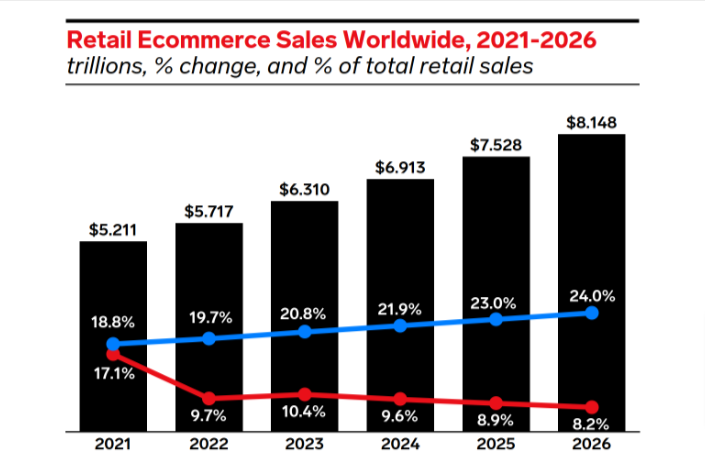
We’ve got loads of resources to help with launching a successful ecommerce business. Discover the best channels to sell physical goods and no less than 101 great ecommerce business ideas.
Pros and cons of ecommerce
| Pros | Cons |
|---|---|
| ✅ Sell physical or digital products | ❌ Inventory management for physical goods |
| ✅ Low barriers to entry | ❌ Competitive |
| ✅ Scalable | ❌ High start-up costs for physical products |
| ✅ Potentially highly profitable | ❌ Demand can fluctuate |
How to get started in ecommerce
The key to selling both digital and physical products is to do your research to find lucrative niches and the right selling channels.
If you plan to sell physical products, you will need to find ways to source inventory. If you prefer to focus on digital, think about how you are going to create your products.
There are some great platforms to help with this, including AI-based tools, which can ramp up your online sales.
Ecommerce making money: Victor Madu
If you want to see how to nail ecommerce, look no further than Victor Madu. Having built a super profitable online clothing business For the Leaux, Madu turned his attention to digital products.
The result was GOAT Sports Bets, a premium membership program. Read all about Madu’s awesome experiences with Whop.
4. eLearning
A bit of a cheat, maybe, but we’ve grouped eLearning under one umbrella. In reality, this business model covers several knowledge-based areas, such as:
- Online courses: Pre-recorded, on-demand lessons collected around a specific topic, which often have a live chat or feedback component.
- Coaching/mentoring: This is more professionally focused, with opportunities to help people develop their careers or businesses.
- Teaching: Group or one-on-one instruction on academic or non-academic subjects, based on a lesson plan or curriculum.
- Tutoring: More informal and personalized than teaching, with opportunities to tutor academic and non-academic subjects.
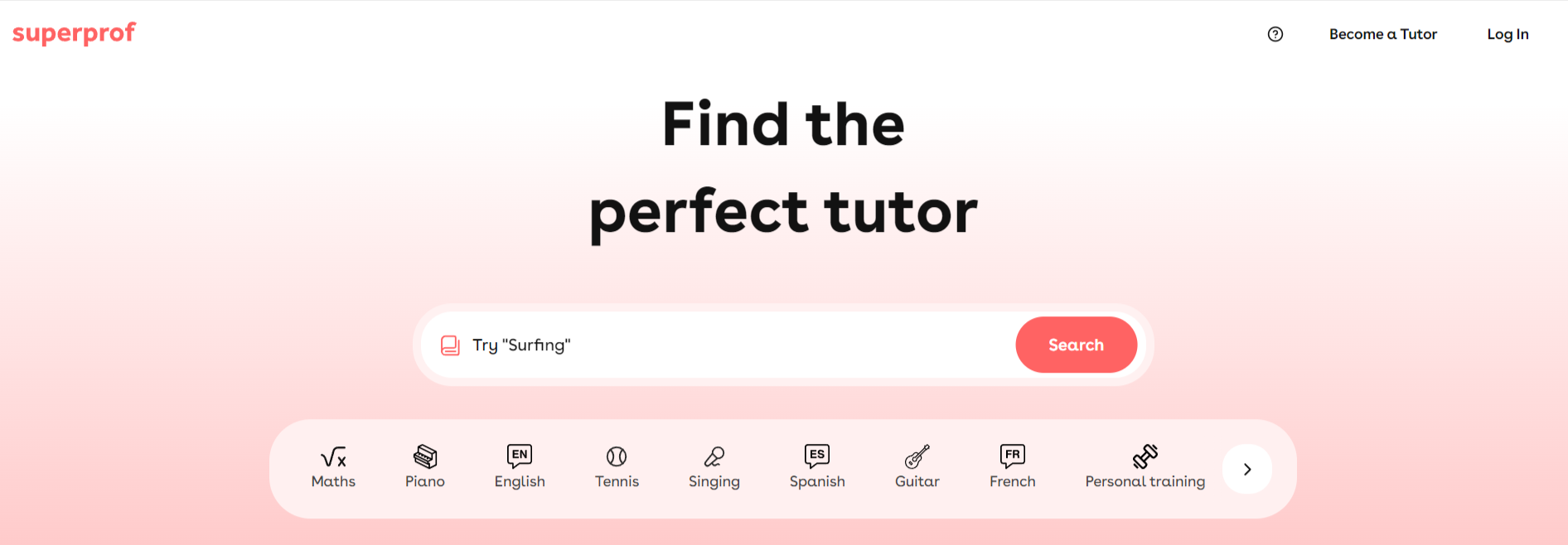
What these offerings have in common is that they are all about sharing something you know about with a paying audience. This might be someone wanting to learn a language or a budding entrepreneur looking to make six figures.
There's lots of overlap here. If you tutor or coach, you can distill your sessions into an online course, for example. Likewise, online teachers rake in some extra dough offering one-on-one tutoring.
There is also the added bonus of being able to upsell extra content, such as ebooks, podcasts and subscriptions to offer added value to your audience.
Pros and cons of eLearning:
| Pros | Cons |
|---|---|
| ✅ Suited to lots of subjects and niches | ❌ Need to attract students |
| ✅ Easy to start | ❌ May require teaching creds |
| ✅ Harnesses your existing skills | ❌ Time-intensive to create content |
| ✅ Low overheads | ❌ Tutoring platforms are competitive |
| ✅ Multiple income streams |
How to get started in eLearning
The first thing is to choose your niche. Academic tutoring and teaching often require relevant credentials, while other opportunities simply require experience or knowledge.
Once you’ve found your topic, create your offering and find places to promote and sell your courses.
The great news is there are lots of paid and free platforms out there to support delivering online learning and growing your business.
eLearning making money: Jenny Paul
Jenny Paul offers one-to-one business coaching and online courses to people who want to learn about becoming entrepreneurs or accelerating their income. And they’re willing to pay her big bucks to tap into her knowledge base.

She first launched courses on two different platforms, and also pre-sold her course to find out the level of interest before investing time in developing her content.
Her site is full of resources and free content, including a podcast and blog.
Overall, Paul has built a clear, focused offering that draws people in and encourages them to pay money for her big-ticket item – the one-on-one coaching. The price? A mere $12.5k.
5. Making and selling apps

Apps are on the rise, so if you’re tech-minded and want to build a profitable online business, this is a space to know about.
Under this model, you develop and monetize mobile applications (apps) for commercial use. You make money through in-app purchases or charging users a monthly fee.
While app development can be a goldmine, it also requires investment and expertise. The type of talent often involved includes:
- Android and/or iOS app developers
- UX/UI designers
- Testers
- Backend developers
- Troubleshooting experts
- Cybersecurity consultants
- Business strategists
How much talent you need to bring on board will depend on your ambitions but a successful app launch is no easy feat.
That said, the upside can be eye-popping, with the app market expected to reach $613bn in 2025.
Pros and cons of apps
| Pros | Cons |
|---|---|
| ✅ Scalable | ❌ Start-up costs are high |
| ✅ Potentially very profitable | ❌ Long development time |
| ✅ Growing space | ❌ Hard market to enter |
| ✅ Opportunity in diverse sectors | ❌ Competitive |
How to get started with an app-based business
To start an app-based business, you need to find a strong and commercially viable idea. So, the crucial thing is to research your potential market. Your idea might be good – but is there potential to make money?
In other words, what problem does your app solve or what does it do better than current offerings?
The next step is to code and test your app to ensure functionality and usability, firstly achieving MVP status before moving to a full market launch.
Once you have proven your app works, you need to execute a plan to commercialize or monetize your software. This might mean building a paying user base or even selling your app to a third party.
Apps making money: Polycam
Founded in 2021, the Polycam app offers 3D and LiDAR scanning functionality to iOS and Android users. People can download the app and create 3D models from their photos.
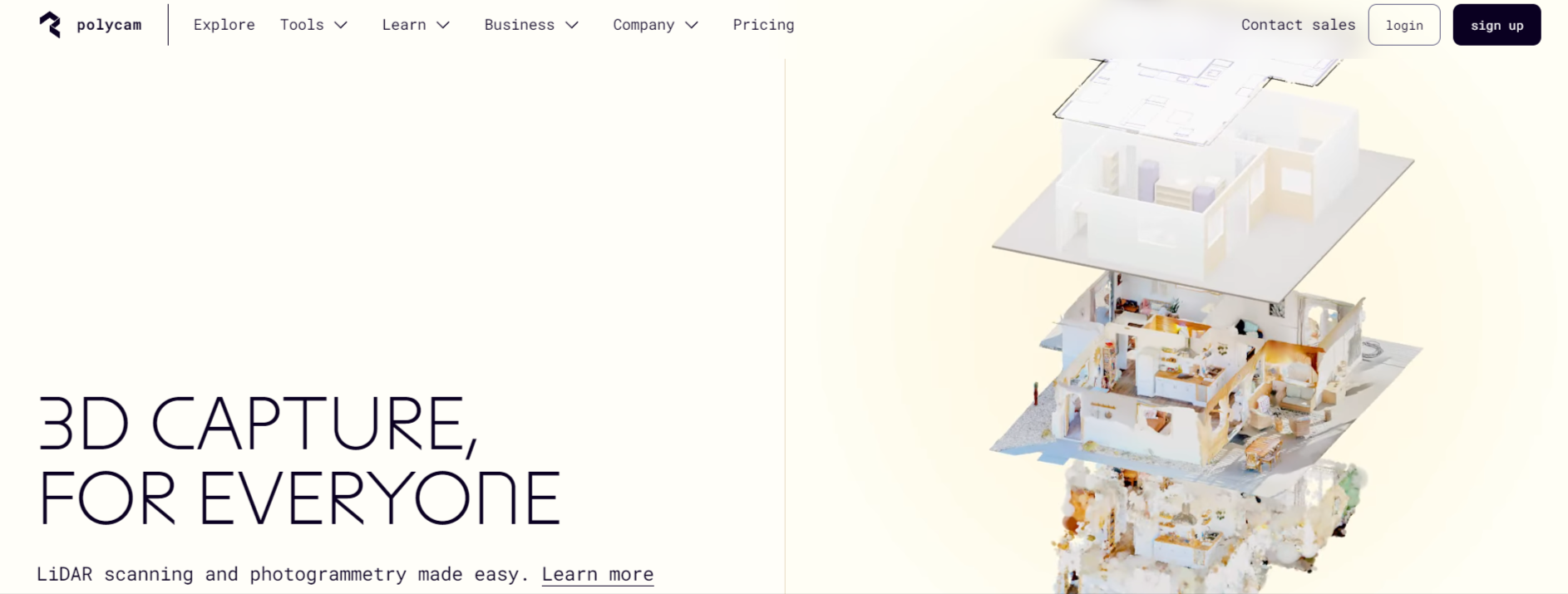
There are free options that let users capture and share their own 3D creations with like-minded fans of the technology.
However, the app makes money with a paid subscription model, which gives individuals and enterprises access to more advanced features.
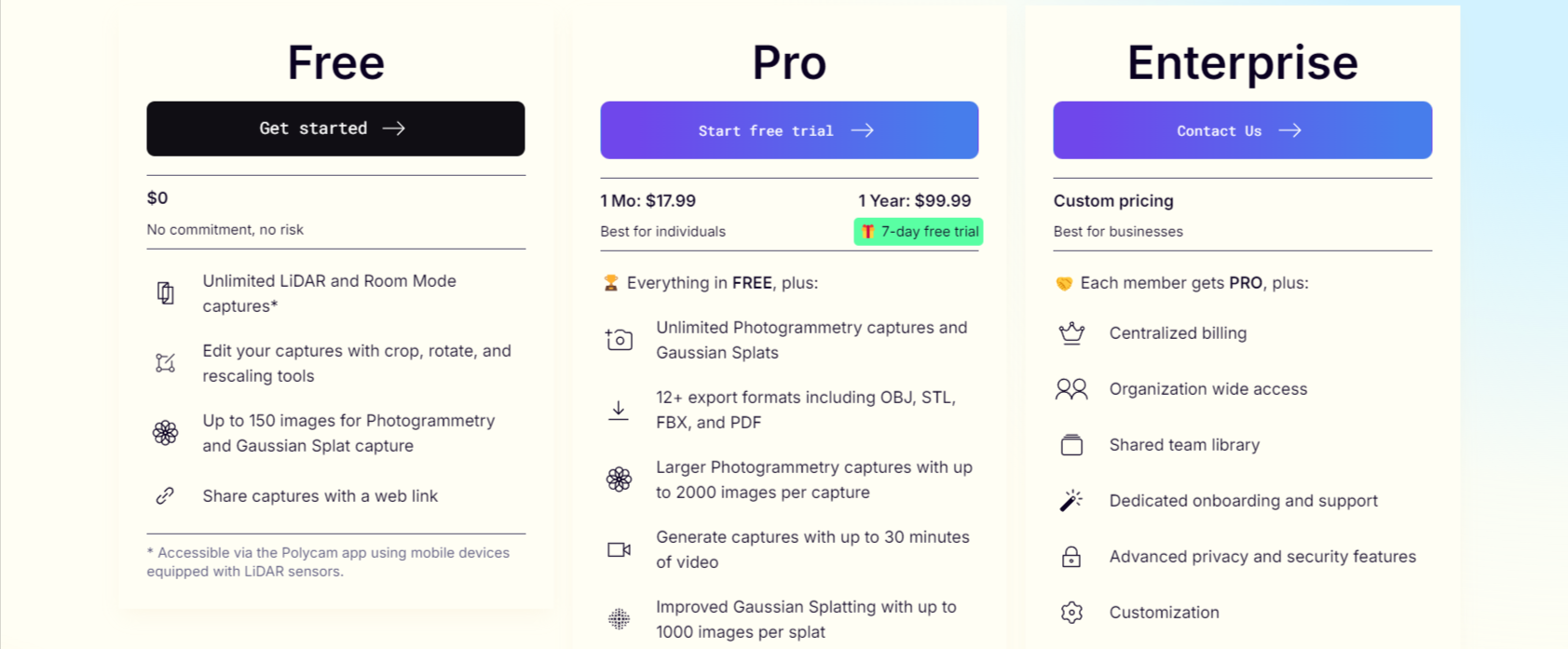
During development, the app attracted $21m in series A funding and in its first five years saw search growth of 1,350% (no, that’s not a typo).
To date, the app has gained 100,000 paid users and over 1m Google Play store downloads.
6. Memberships
If your goal is recurring revenue (as it should be), then memberships might be your route to online success. You can find the membership model in action across lots of niches.
Similar to subscriptions, memberships often have more of a focus on community-building. Under this model, users pay for additional content and access to areas of your site. Premium content examples include:
- Extra podcast episodes
- Live events
- Chatrooms
- Access to coaching sessions
- Articles and ebooks
Memberships can be paid for annually or monthly. Often, there is a free option (freemium model), with users able to get a taste of what you offer before committing to a paid membership. These might be offered on a tiered basis.
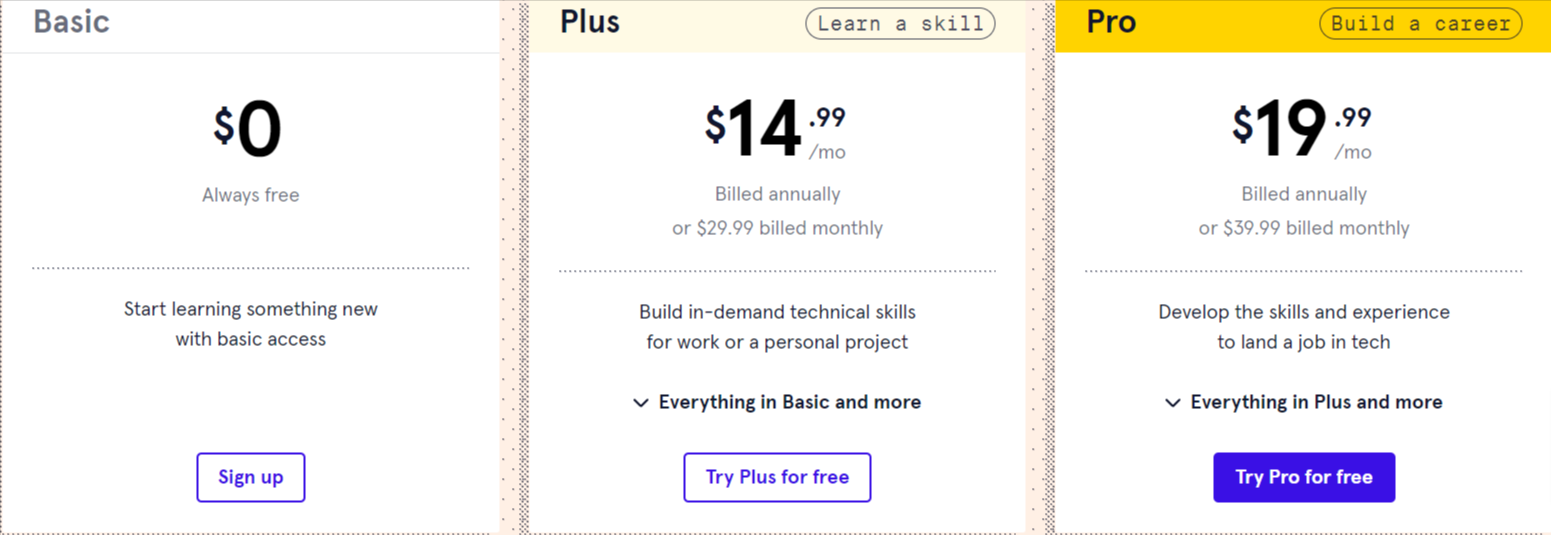
Some business owners even charge a one-time flat fee for access to all their content. You can also find free trials to tempt users to join.
Here's your guide to choosing the right membership models for your business.
The membership model offers great opportunities to scale across a wide range of niches. The main challenge is building a large audience and producing regular content that’s worth paying for.
Speaking of which, you also have to keep on top of churn rate. This is a way of measuring the proportion of people who cancel their memberships.
Memberships work particularly well as an add-on to other offerings, such as online courses and coaching.
Pros and cons of memberships
| Pros | Cons |
|---|---|
| ✅ Recurring revenue | ❌ Need to attract lots of users |
| ✅ Scalable | ❌ Time-consuming |
| ✅ Build an engaged community | ❌ Churn rate can harm profits |
| ✅ Multiple niches | |
| ✅ Add more revenue streams |
How to get started with memberships
The key to creating a successful membership-based business is attracting a large audience, as only a portion of users will convert to a paid plan. So, start by researching your niche to find a viable opening for a membership offer.
Spend time exploring the different places out there for building communities and memberships.
Memberships making money: My Trainer Phil
This fitness-focused site is a good example of how memberships can add value to users and give you a healthy income stream.
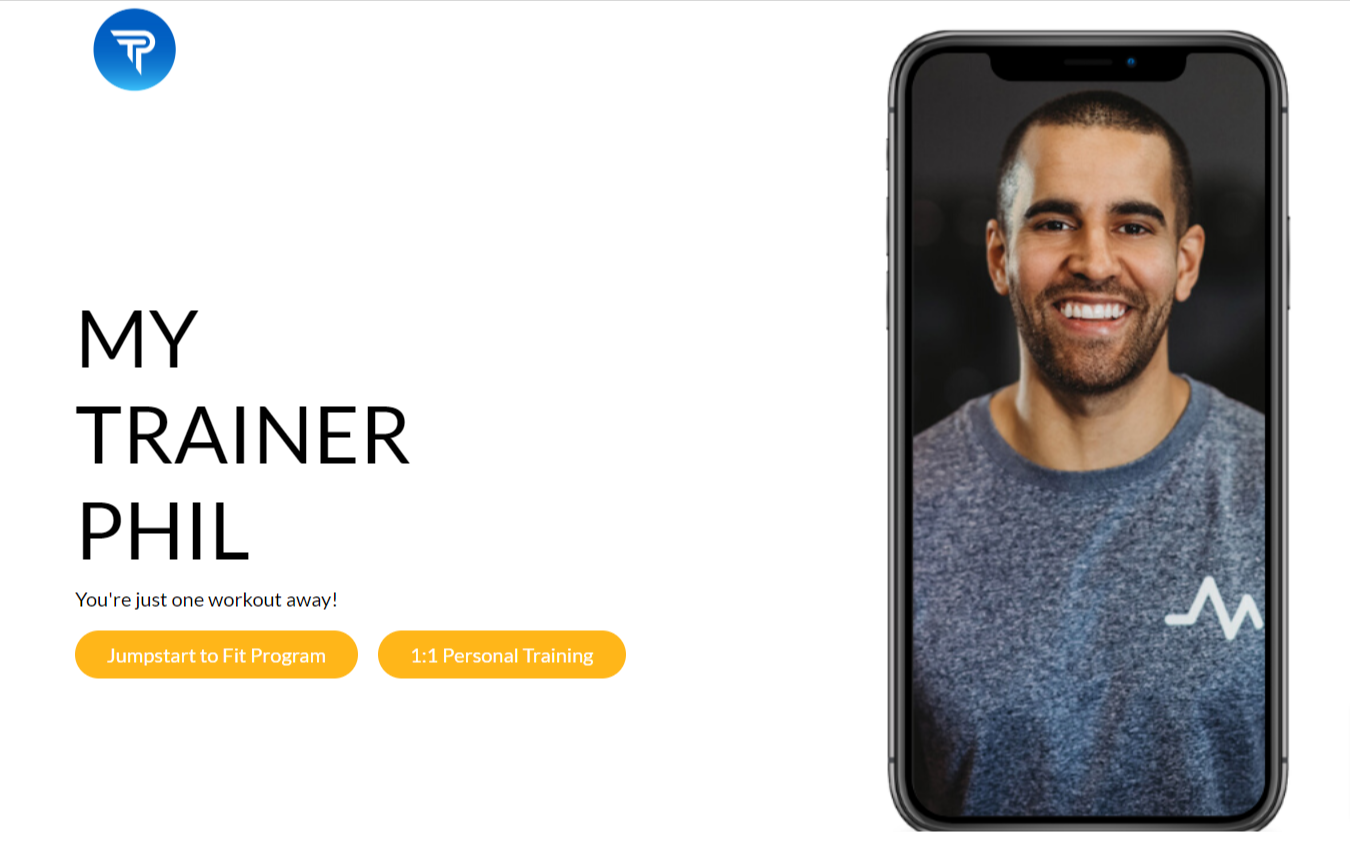
Founded by Phil Hynes, My Trainer Phil offers free content, such as taster workouts, aimed at getting people to sign up for his paid membership plans.
These come with extra workouts sent out regularly, plus access to a community, providing people with support and motivation on their fitness journeys. Members also get live classes and Q&A sessions with Phil.
Prices start from $6.99 a month, extending to a one-off $999 for his Jumpstart 90-Day Bundle. His site nets a cool $100k a month. He’s also got a few Instagram followers…

7. Freelancing
If you dream of working for yourself and have in-demand skills, freelancing might be the right model for you. Example freelance specialisms include:
- Writing
- Graphic design
- Website development
- Marketing/SEO
However, freelancing opportunities exist across many service and knowledge-based industries.
As a freelancer, you offer your skills on a self-employed basis. You might be brought on for a specific, fixed-term project or become a long-term collaborator. Freelancing can be a useful side hustle or a full-time gig.
Freelancing has remained a steady component of the US labor market as people seek out a boost to their income or a better work/life balance:
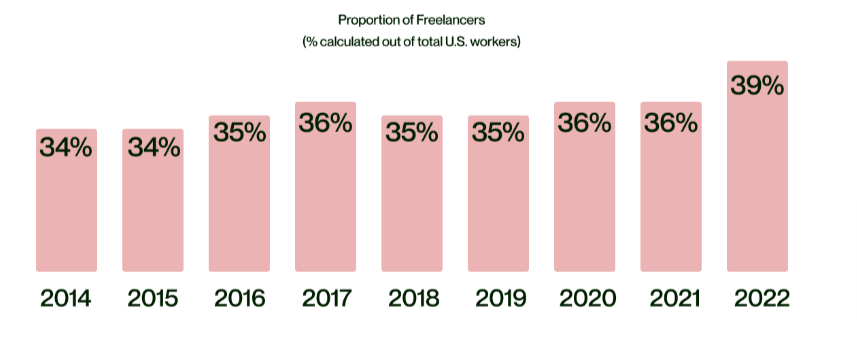
People are attracted to freelancing because of the low overheads and equally low barriers to entry. You can get started today with almost zero investment.
The downside of freelancing is that it is a competitive space so is prone to low pay rates. This “race to the bottom” has increased with the rise of AI, which is now being used for tasks previously done by freelancers.
This means that to make real money as a freelancer, you need to pick and choose your opportunities and market yourself directly to potential clients – preferably ones with deep pockets.
However, plenty of freelancers have built successful self-employed operations and have gone on to make money helping others follow in their footsteps.
Pros and cons of freelancing
| Pros | Cons |
|---|---|
| ✅ Flexible | ❌ Competitive |
| ✅ Open to all | ❌ Often low paid |
| ✅ Scalable | |
| ✅ Low overheads |
How to get started in freelancing
The first thing is to define your freelance offer. There are debates over whether to niche or become a generalist. If starting out, the priority is to get some experience under your belt but in the longer term, niching can lead to higher rates.
Niching can mean subjects or content type. For example, freelance writers might focus on white papers or ghostwriting. To get started, you can create a website, set up a LinkedIn profile, and social media presence – and sell your services to clients.
If you lack experience, you can try freelancing platforms, such as Upwork and Fiverr, or offer your services for free for a short time to build up your portfolio.
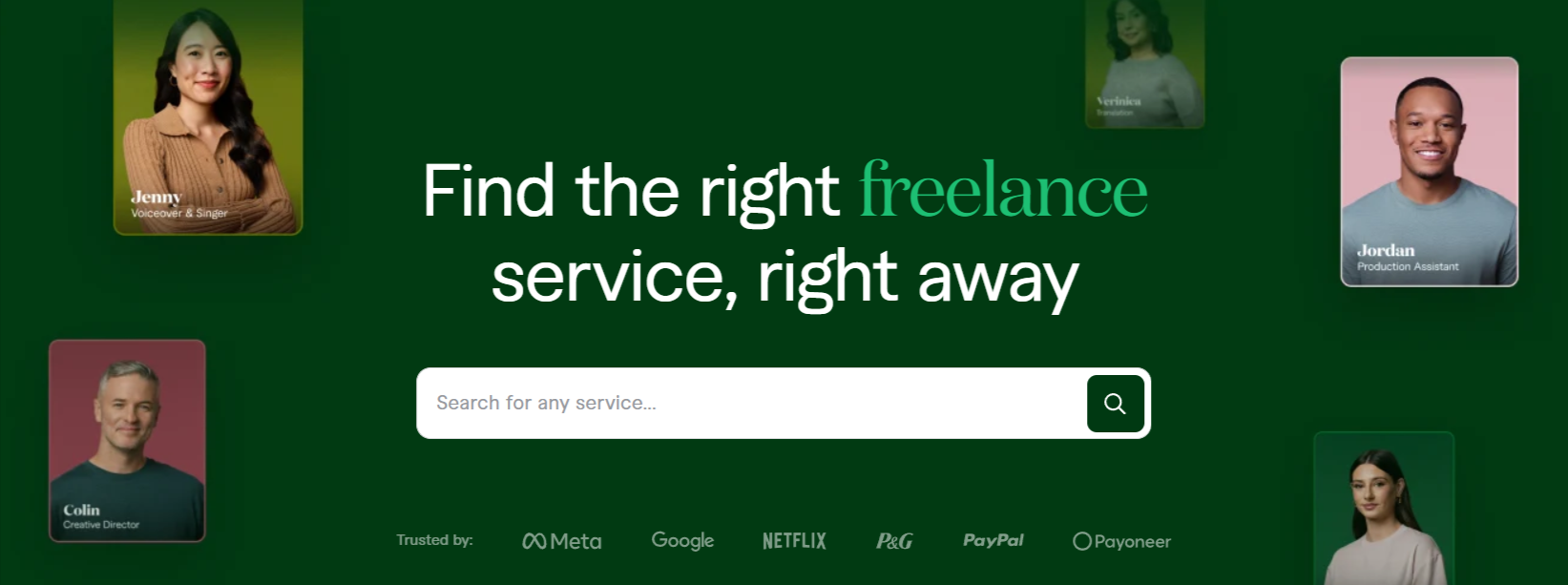
Tip: Always ask for a testimonial from a happy client – these look great on your website or LinkedIn and reassure potential clients that you’re the real deal.
Freelancers making money: Ryan Robinson
Ryan Robinson is an example of how becoming a successful freelancer can lead to even bigger things.
A content marketer and strategist, he’s worked with companies like LinkedIn, Google, and Adobe. His website boasts a monthly readership of 500,000+.
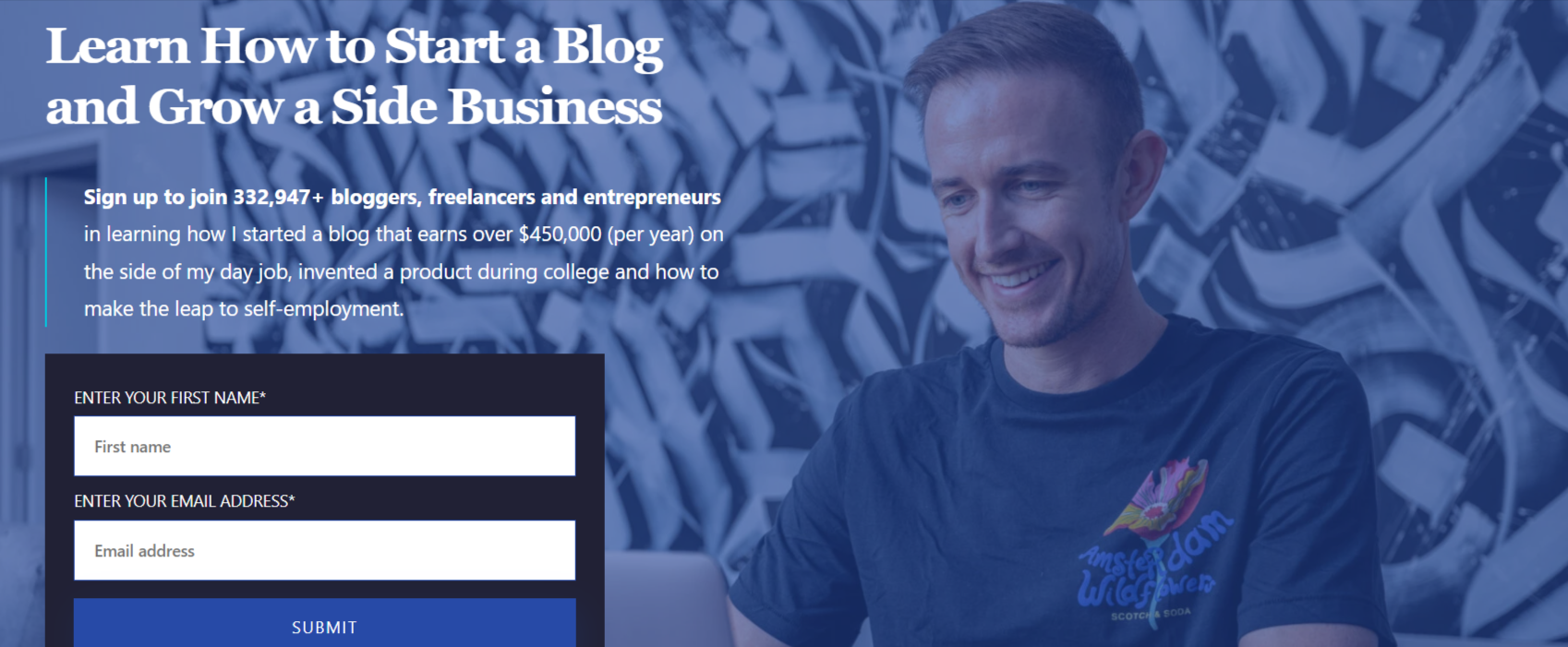
Check out his site and you’ll see he offers courses, podcasts, coaching, subscriptions, consulting and all kinds of other good stuff. And it all stemmed from freelancing.
8. Affiliate marketing
Affiliate marketing is a commission-based business model that involves promoting other companies’ products and services. It overlaps with content creation to offer another income stream, as well as being a standalone model.
So, how does it work? Well, businesses offer affiliate programs, which you sign up to. You then get a unique link to embed in your content. When someone clicks on your link, you get credit for the referral and a percentage – easy, right?
Schemes may reward affiliates for sales, clicks or when someone engages with the site in some way, like signing up for a newsletter. Even better, there’s also big ticket affiliate marketing, often in the B2B space, where you can net $100s for landing a sale.
Overall, the global affiliate marketing sector is expected to reach $15.7bn this year, so there’s still good money to be made in this space.
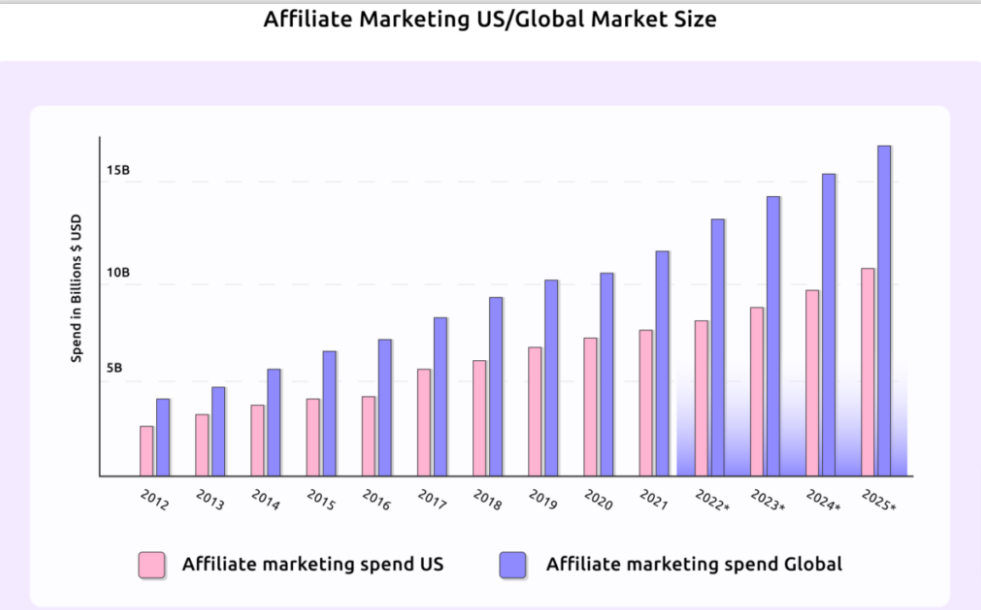
Once you’ve signed up to some relevant programs, you promote your affiliate marketing offers through various channels, including:
- Social media content
- Blogs
- Review websites
- Influencer partnerships
- Paid ads
- Email marketing
As well as picking the right niche, the key to success in this space is driving enough quality traffic to the end company. This is because you only get paid when visitors buy something from (or engage with) the client’s site.
Pros and cons of affiliate marketing
| Pros | Cons |
|---|---|
| ✅ Potentially highly profitable | ❌ Crowded space |
| ✅ Choose from multiple niches and subniches | ❌ Need to drive lots of quality traffic to the end company's site |
| ✅ Easy to start | ❌ Profitability can take time |
| ✅ Low overheads | |
| ✅ Highly scalable |
How to get started in affiliate marketing
To get started with affiliate marketing, you need to find the right niche. There are hundreds of niches (or sub-niches), with plenty of affiliate offers available within each one.
However, each niche has different rewards and requirements. Also, affiliate offers vary in the percentage they pay and the type of audience you need to attract.
So, do your research to find what’s right for you – put in the time and it can lead to huge rewards.
According to Payscale, the average annual affiliate marketing salary is $56K+. Some affiliate marketers earn upwards of $150k a year… or more.
Affiliate marketers making money: Wirecutter
To see affiliate marketing in action, we turn to this review site which operates in what’s called the “involved affiliate marketing” space.
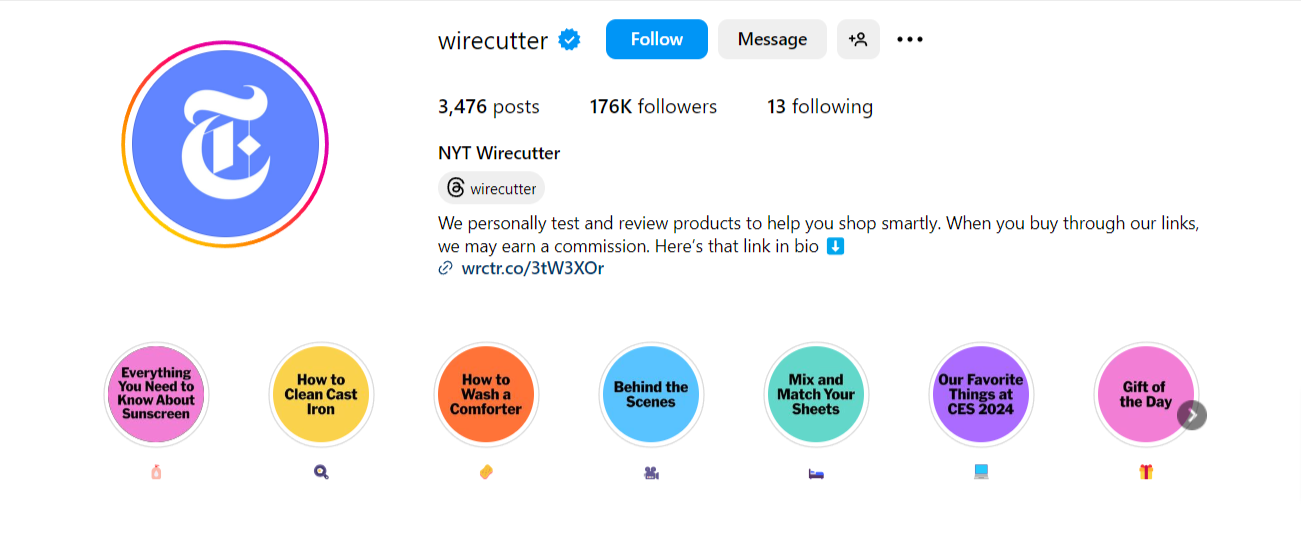
This means that its writers use the actual products they’re promoting to offer users real-world experience, so they can make an informed buying decision.
Wirecutter posts reviews of household items, gadgets, and electronics. The site makes clear that there are affiliate links in their content. However, it has an independent, journalistic feel, rather than being sales-heavy:

So, is Wirecutter successful? Well, it made a sweet $150m in five years – then got bought by the New York Times. For $30m.
9. Online marketplace
We go a bit off-piste for our next model, which operates in a pretty new space – at least when it comes to entrepreneurs.
Online marketplaces are a type of ecommerce business. But rather than sell your own stuff, you open it up to third-party sellers.
While the online marketplace is dominated by familiar names – hello Amazon, Etsy eBay and Whop – there is still an opportunity to take a slice of that pie for yourself.
The challenges here are building the online infrastructure and attracting both buyers and sellers to your platform.
However, given its growing popularity, platforms are popping up to help start-up marketplaces. For example, ShareTribe offers marketplace-building functionality:
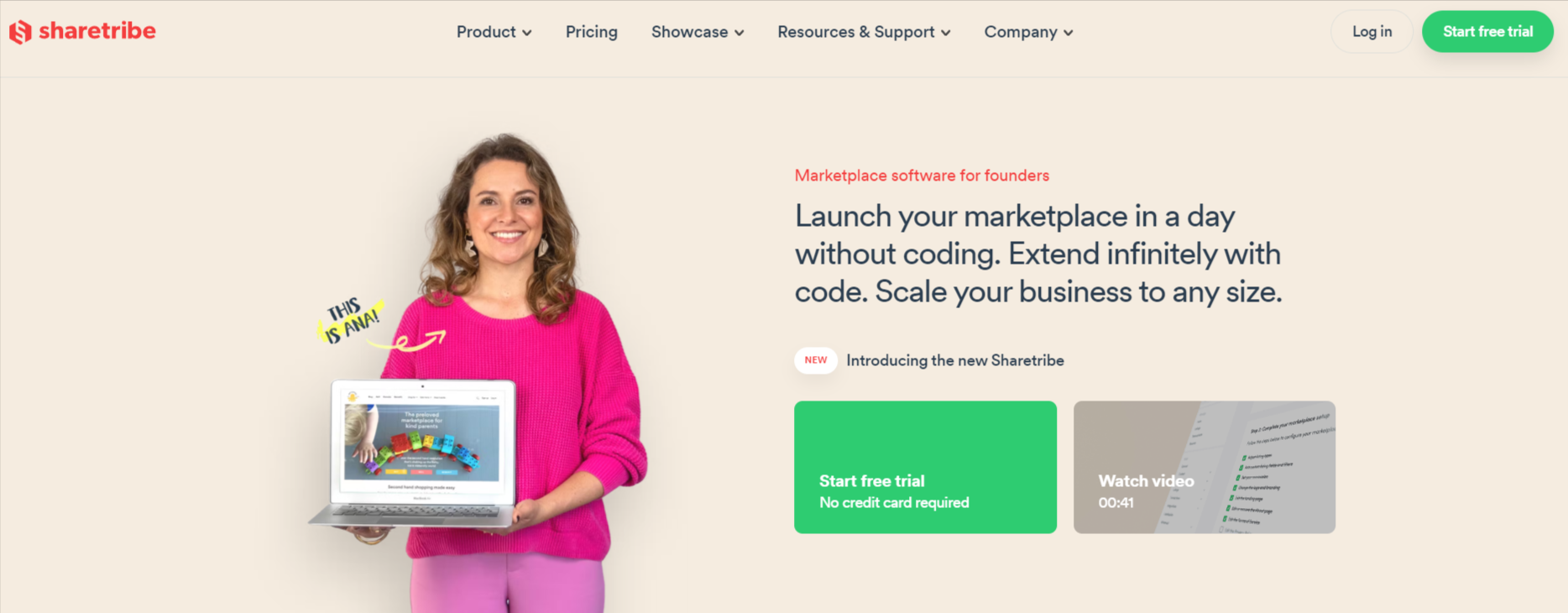
As well as marketplaces for physical goods, you can also create an offering around services – think Airbnb, Upwork and Uber.
While this is not necessarily the best model for brand-new online entrepreneurs, if you can identify an underserved niche, the rewards could be massive.
Pros and cons of online marketplaces
| Pros | Cons |
|---|---|
| ✅ Relatively new space for online entrepreneurs | ❌ Hard to build the necessary infrastructure |
| ✅ Potential for high profits | ❌ Time-intensive |
| ✅ Scalable | ❌ Need to attract buyers/sellers |
| ❌ Big-name competition |
How to get started in online marketplaces
As with other business models in our list, the big thing here is niche. It’s crucial to find something not already covered by the big guys.
Some existing marketplaces have such high name recognition in their sector that they have almost become nouns.
Want to get from A to B? Get an Uber. Going on vacation? You’ll want an Airbnb.
So, if you want to become a similar noun in this world, you need to define a space in which you can become the go-to for both buyers and sellers.
Hard, but not impossible…
Online marketplaces making money: Gritty in Pink
Gritty in Pink founder Shira Yevin saw a gap in the music industry and filled it with her INPINK marketplace devoted to helping female musicians get hired.

Gritty in Pink has since expanded to cover diverse women creators across multiple industries.
Yevin was able to attract industry sponsorship agreements and scored a nice $2,000 during the first week of operation.

10. Reselling

Last but not least, we come to reselling. Easy to get into and to scale this is a popular model, especially for those new to online entrepreneurialism.
The reselling business model is closely related to ecommerce. The difference is that you act as a middle person, buying things cheap and selling them for a profit.
Not surprisingly, this means understanding the market, so you can bag a bargain and wrap up a tidy profit on the other end.
The types of products you can resell range from dirt cheap to off-the-charts expensive, such as:
- Clothing & footwear (including vintage items and designer brands)
- Furniture & homewares
- Electronics & video games
- Collectables & (rare) vinyl
- Books (including ebooks)
- Vehicles
- Art
- Property (yes, really…)
- Watches & jewelry
As well as variety in the type of products you can resell, there are multiple ways to structure your reselling side-gig or business.
Reselling models include dropshipping and Amazon FBA. These can help you to address one of the biggest potential headaches of reselling – inventory management.
The good news is that there are lots of reselling platforms and communities available, as well as places to source goods to sell. So, once you’ve decided on your niche and done some research into the market, you can be up and running in no time.
At a basic level, reselling can be as simple as listing unwanted things you already own to make a few dollars profit, such as clothing (known as thrifting).
The other end of the scale includes big-ticket items, such as flipping houses or getting into the potentially lucrative world of bulk-selling through wholesale and retail arbitrage.
Things to be aware of when it comes to reselling include relevant laws and the current marketplace. Reselling can be prone to trends and fluctuations, so it’s important to find ways to stay profitable.
Pros and cons of reselling
| Pros | Cons |
|---|---|
| ✅ Low barriers to entry | ❌ Time-intensive to start |
| ✅ Easy to get started | ❌ Profits can fluctuate |
| ✅ Multiple niches and product types | ❌ Legal compliance issues |
| ✅ Full-time gig or flexible side hustle | ❌ Inventory management |
| ✅ Opportunities to scale | ❌ Competitive |
How to get started in reselling
To get started reselling, you need to decide whether this is going to start out as a side hustle or a fully-fledged business.
Many people get started by simply going through their stuff and asking family and friends for unwanted items then listing them on a platform such as eBay, Etsy or Vinted.
However, if you want to work towards making reselling a business, then you need to take a more professional approach.
Spend time finding a niche to focus on and researching avenues for sourcing inventory. You’ll also want to register your business, establish an online store, and get set up on social media.
Resellers making money: GFNF
Founded by Vincent G, premium reselling community GFNF is a great example of how to crush this business model (with our help, of course).

GFNF rakes in seven figures a year, offering members exclusive alerts, tools, and educational materials. It focuses on things like concert tickets and sports betting, rather than physical items.
The results speak for themselves

Whatever business model you choose, be sure to use Whop
You’ve seen how entrepreneurs just like you are striking gold with all kinds of online businesses. But committing to a business model is a hard decision. We get it.
That’s why we’ve created a platform which lets you create and scale your perfect online business – whatever that might be. Memberships, SaaS, apps, ecommerce, content… you name it, it has a home (and an audience) here on Whop.
Discover your passion and unlock the door to financial freedom with Whop – your one-stop shop for online business success.



